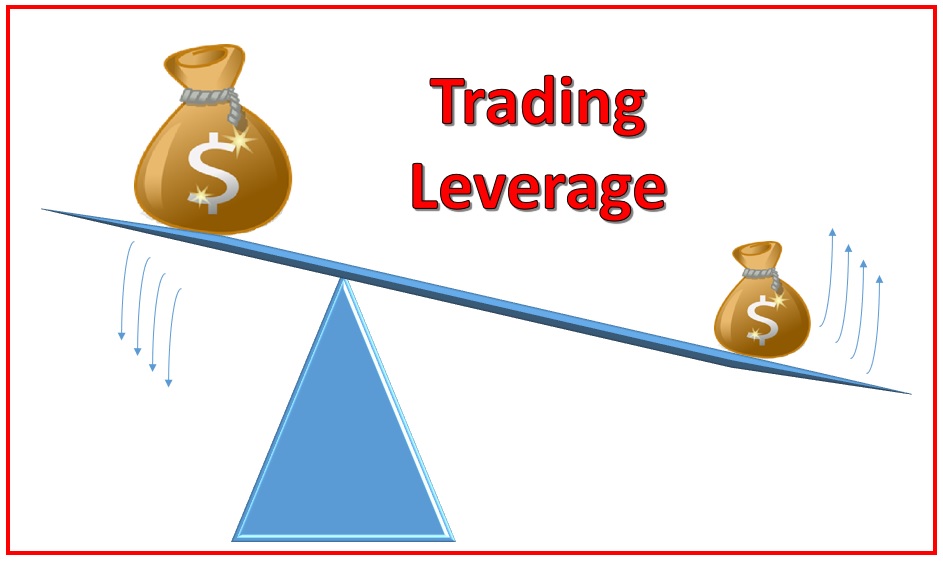Trading Leverage for More Investing Power
Trading leverage is the ultimate tool for investors. It's mainly used with Forex and binary options, but can also be used in a margin account. Essentially, the broker gives you a limit or a percentage of your personal investment (how much money you deposit in your cash account for investing) which allows you to invest more every time you buy into an investment (until that limit is reached). It's just like having equity in your house, except the equity is in your trading account.
Leverage is the amount of labor or force you put into something to get something in return. The more leveraging you add to something, the more you will get out of it.
There are several types of leveraging, but in stock market investing, there is a type of leverage you can use to add more investing power to your stock account so that you can become very successful in the stock market. But be aware, there are significant risks when using it and you will have to pay back any "borrowed" money if you take a loss, including interest.
All of the different types tools available are there to help you make money without having to work as hard for the money, the sole reason the rich get richer and the poor stay poor. Using leverage is one way you can amplify your gains without risking all of your own money.
The primary type of leverage you can use is called a "margin" attached to a brokerage trading account. A margin account allows you to purchase shares of stock with borrowed money. When you create your brokerage account, request a margin account. When you deposit your funds in the account, they will determine the amount of margin they will allow. Some accounts won't let you utilize more than you have in your account at the time; some accounts will give you a set amount based on what they are comfortable with.
A margin limit is just like a loan or line of credit available to you to use as part of your trading account. The brokerage wants to make sure they are going to get all of their money back if you lose it. It's all about the ability to repay the borrowed amount.
If you buy on a margin, when you sell, they will take their money back first and you will keep the profits. If you take a loss, they will take the margin from your own personally invested money. Here in lies the risk. If you dip into the margin for over 30 days, you will incur interest on the money you borrow.
A great thing about a margin account is that you can trade in and out of a stock in the same day without waiting for the cash to settle in your account, which can take two to three days. As long as you don't trade over your core amount in your account (the amount you have personally vested in the trading account). This gives you day trading capabilities without a day trading account.
Example of Trading Leverage
Here is an example of trading leverage and what it can do for you. Say you are trading in a margin account and have $10,000.00 of your own money in your brokerage account. Your brokerage approves you for $10,000.00 in your margin account that you can use towards your investment. You find a great stock at $10.00 per share that meets all of your trading criteria.
Without leverage (just your initial investment), you can buy 1,000 shares. Say it goes up to $15.00 per share. You sell the stock once sell criteria is met and now have $15,000.00 in your brokerage account. That's a $5,000.00 profit on your investment.
Now let's try it while applying your margin funds. With this added leverage, you can purchase 2,000 shares of the same stock (half of it with margin funds). You sell the same shares at $15.00 each for a total payout into your account of $30,000.00. You pay back the margin amount of $10,000.00 to the brokerage (this is automatic) and your total profit on the investment is $10,000.00. Of course the originally invested $10,000.00 also goes to your account.
With trading leverage, you gained an extra $5,000.00 of profit with your original investment of $10,000.00, essentially doubling your return for the same personal investment.
Using leverage to enhance your trades is a good thing as long as you know what you're doing and you don't abuse it. Don't take on undue risk if you can't afford it. In a margin account, you are essentially getting a loan from the broker, so if you take a loss, you must pay that margin back (which takes away from your original investment).
Take care when trading with a margin, but utilize it for greater gains. You can also use it for faster trades, such as with a day trading account. I personally use my margin account, but only trade up to my personally invested amount in the account. When I trade with margin vice cash, I can buy on the open and if it jumps up say $10.00 per share in the morning, I can sell at one o'clock and take the profit. In a cash account, you have no trading leverage and you have to wait two or three days to sell the stock. In that time, the price could go up $10.00, but then go back down below where you bought it in less time than it takes for the funds to settle.
But this added trading leverage, you get more trading power for your invested money, giving you more chances for bigger profits. Here's some more great information about trading leverage to help you better understand what it's all about.


New! Comments
Have your say about what you just read! Leave me a comment in the box below.